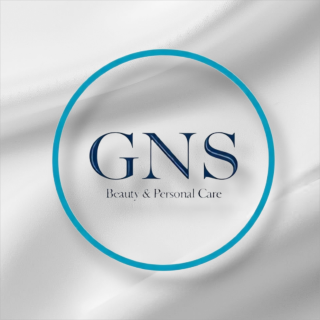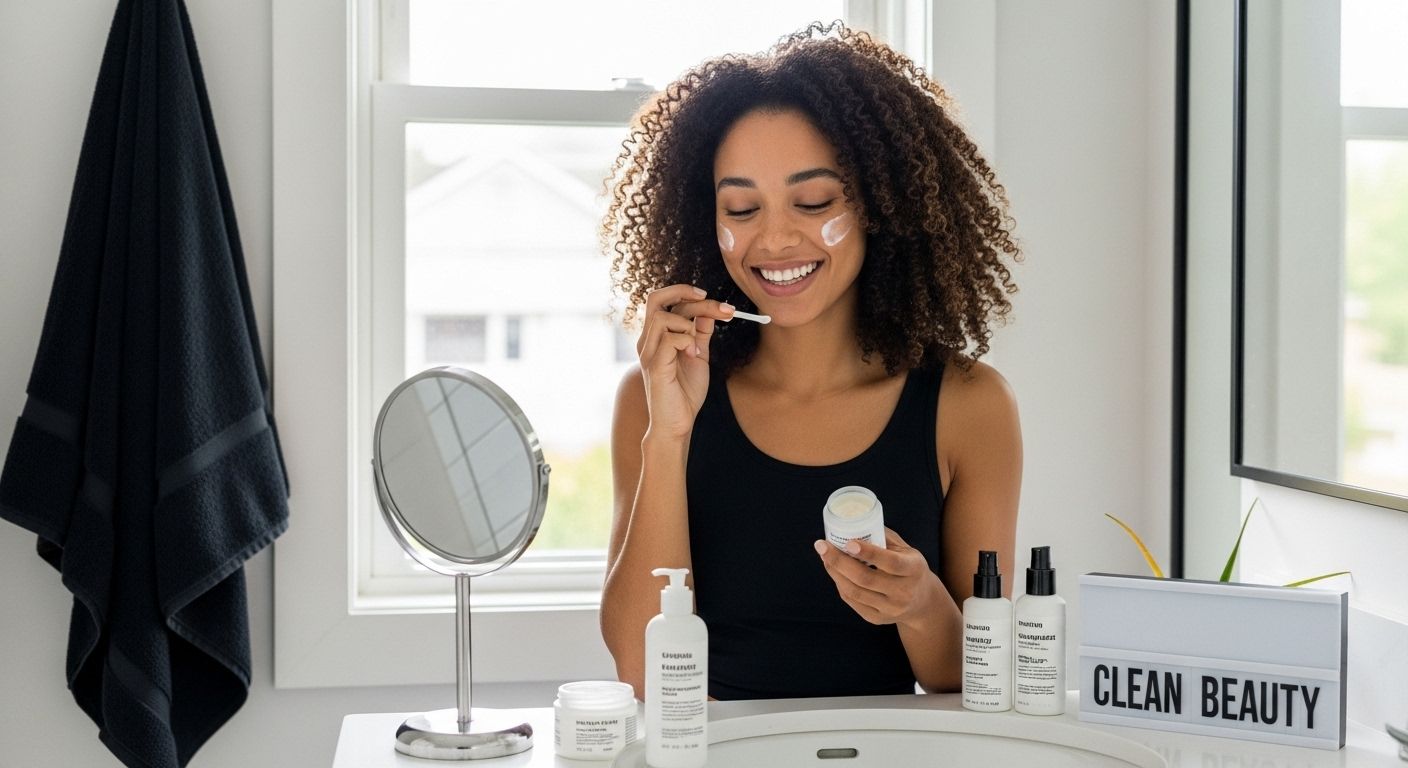
Clean beauty is changing everything about how we think about makeup and skincare. More than 70% of younger shoppers between 18 and 35 are now driving the clean beauty movement. But the biggest shock comes when you realize these clean products go far beyond swapping out a few ingredients. The real shift is how brands are rewriting the rules on safety, transparency, and ethics—reshaping the entire industry from the inside out.
Table of Contents
- Defining Clean Beauty: What It Means And Its Principles
- Why Clean Beauty Matters: Health, Environment, And Ethics
- How Clean Beauty Works: Ingredients And Formulations
- Key Concepts In Clean Beauty: Transparency, Safety, And Sustainability
- The Evolving Landscape Of Clean Beauty: Trends And Consumer Awareness
Quick Summary
| Takeaway | Explanation |
|---|---|
| Ingredient transparency is crucial. | Clean beauty requires full disclosure of all product components for informed consumer choices. |
| Focus on non-toxic formulations. | Products should avoid harmful synthetic chemicals to promote safety for health and the environment. |
| Support sustainable sourcing practices. | Ethically sourced ingredients help mitigate environmental impacts and support responsible industry practices. |
| Look for certifications in clean beauty. | Certifications can help identify truly clean beauty products and ensure adherence to specific safety standards. |
| Understand the need for advanced formulations. | Innovative techniques enhance product safety and effectiveness while using fewer harmful substances. |
Defining Clean Beauty: What It Means and Its Principles
Clean beauty represents a transformative approach in the cosmetics and personal care industry that goes beyond traditional marketing claims. At its core, clean beauty is a philosophy prioritizing product safety, transparency, and ethical ingredient sourcing. Unlike conventional beauty products, clean beauty emphasizes using ingredients that are safe for human health and the environment.
The Fundamental Philosophy of Clean Beauty
The concept of clean beauty emerged from growing consumer awareness about the potential harmful effects of synthetic chemicals in personal care products. According to research by Kelly Dobos, an expert in cosmetic science, clean beauty lacks a standardized regulatory definition. However, it generally encompasses products formulated without ingredients considered potentially toxic or harmful.
Key principles of clean beauty include:
- Ingredient Transparency: Complete disclosure of all product components
- Non-Toxic Formulation: Avoiding known harmful synthetic chemicals
- Sustainable Sourcing: Prioritizing environmentally responsible ingredient procurement
Understanding Clean Beauty Standards
Clean beauty is not just about removing “bad” ingredients but proactively selecting safe, beneficial components. This approach requires rigorous evaluation of each ingredient’s potential impact on human health and ecological systems. Consumers seeking clean beauty products typically look for:

- Natural or naturally derived ingredients
- Products free from parabens, sulfates, and synthetic fragrances
- Cruelty-free and ethically produced formulations
While the term remains loosely defined, clean beauty represents a commitment to personal and planetary wellness. It challenges traditional beauty industry practices by demanding higher standards of ingredient safety, transparency, and environmental responsibility.
Why Clean Beauty Matters: Health, Environment, and Ethics
Clean beauty transcends aesthetic preferences, representing a holistic approach to personal care that prioritizes human health, environmental sustainability, and ethical responsibility. By challenging traditional beauty industry practices, clean beauty advocates for comprehensive wellness that extends far beyond surface-level concerns.
Health Implications of Beauty Product Choices
Research from the National Institutes of Health reveals significant potential risks associated with synthetic chemicals in personal care products. These substances can potentially cause long-term health complications, including hormonal disruptions, allergic reactions, and increased cancer risks. Clean beauty seeks to mitigate these risks by carefully selecting ingredients that are scientifically validated as safe and minimally harmful.
Key health considerations in clean beauty include:
- Avoiding known endocrine disruptors
- Minimizing exposure to potentially carcinogenic compounds
- Reducing skin irritation and allergic reaction risks
Environmental and Ethical Dimensions
Clean beauty extends its impact beyond individual health, addressing broader ecological and social responsibilities. The movement emphasizes sustainable ingredient sourcing, reduced environmental footprint, and ethical production practices. Consumers choosing clean beauty products contribute to a more responsible global supply chain that values planetary well-being.
Ethical considerations in clean beauty encompass:
- Cruelty-free product development
- Sustainable and responsible ingredient procurement
- Minimal environmental packaging waste
By supporting ethical beauty products that prioritize transparency, consumers actively participate in a global movement promoting healthier, more responsible personal care practices. Clean beauty represents not just a product choice, but a conscious lifestyle commitment to personal and planetary wellness.
The following table provides an overview of the core principles of clean beauty, summarizing essential concepts and their aims as discussed throughout the article.
| Principle | Description |
|---|---|
| Ingredient Transparency | Requiring full disclosure of all product components to enable informed choices |
| Non-Toxic Formulations | Avoiding use of harmful synthetic chemicals in favor of safer, evidence-based alternatives |
| Sustainable Sourcing | Ethically procuring ingredients to reduce environmental impact and support responsibility |
| Safety | Prioritizing human health by minimizing risks such as allergies or hormonal disruptions |
| Certification | Seeking third-party or independent verification to validate clean claims |
| Innovation | Using advanced formulation techniques and green chemistry for effective, safer products |
How Clean Beauty Works: Ingredients and Formulations
Clean beauty operates through a meticulous approach to ingredient selection, formulation, and product development that prioritizes human and environmental safety. Unlike traditional cosmetic manufacturing, clean beauty brands employ sophisticated strategies to create products that are both effective and conscientious.
Ingredient Selection and Sourcing
According to research published in the journal Cosmetics, clean beauty formulations leverage innovative approaches to ingredient sourcing. Sustainable ingredient procurement involves carefully evaluating raw materials from plant-derived, microorganism-based, and other eco-friendly sources. The process goes beyond simple ingredient replacement, focusing on comprehensive safety assessments and environmental impact.
Key criteria for ingredient selection include:
- Proven safety profile with minimal health risks
- Minimal environmental impact during sourcing
- Traceable and transparent supply chains
- Preference for biodegradable and renewable ingredients
Advanced Formulation Techniques
Clean beauty brands employ cutting-edge scientific approaches to develop products that meet rigorous safety and performance standards. Nanotechnology plays a crucial role in enhancing ingredient delivery and efficacy, allowing formulators to create products with reduced chemical concentrations while maintaining optimal performance.
Advanced formulation strategies involve:
- Utilizing natural preservative systems
- Developing innovative delivery mechanisms
- Minimizing synthetic chemical dependencies
- Implementing green chemistry principles
By exploring the latest sustainable beauty innovations, consumers can understand how clean beauty transforms traditional cosmetic development. The approach represents a sophisticated blend of scientific innovation, ethical considerations, and environmental responsibility, challenging conventional beauty industry practices through intelligent, conscientious product creation.

Key Concepts in Clean Beauty: Transparency, Safety, and Sustainability
Clean beauty represents a comprehensive approach to personal care that goes beyond superficial product claims, embedding critical principles of transparency, safety, and sustainability into every aspect of product development and consumer experience.
Understanding Transparency in Beauty Products
Research from Ca’ Foscari University highlights the ongoing challenge of ambiguous terminology in the beauty industry. Transparency in clean beauty means providing clear, comprehensive information about product ingredients, sourcing methods, and manufacturing processes. This commitment empowers consumers to make informed decisions about the products they choose.
Key elements of transparency include:
- Complete ingredient disclosure
- Clear labeling of ingredient origins
- Open communication about manufacturing practices
- Verifiable claims about product composition
Safety and Sustainability as Core Principles
Clean beauty fundamentally redefines product safety by prioritizing human health and environmental well-being. The approach goes beyond traditional regulatory standards, implementing rigorous screening processes that evaluate ingredients for potential long-term health and ecological impacts.
Critical safety and sustainability considerations encompass:
- Elimination of known harmful synthetic chemicals
- Prioritization of biodegradable ingredients
- Reduction of carbon footprint in production
- Ethical sourcing of raw materials
By exploring sustainable beauty innovations, consumers can understand how clean beauty transforms traditional product development. This holistic approach represents a sophisticated commitment to personal wellness, environmental responsibility, and transparent consumer communication.
TheEvolving Landscape of Clean Beauty: Trends and Consumer Awareness
Clean beauty has transformed from a niche market segment into a powerful global movement, driven by increasing consumer consciousness about personal health, environmental sustainability, and ethical product development. This evolution reflects a profound shift in how people perceive and interact with personal care products.
Shifting Consumer Demographics and Motivations
Research published in Frontiers in Sustainability reveals that younger consumers, particularly those aged 18-35, are pioneering the clean beauty revolution. These demographics are characterized by heightened health consciousness, environmental awareness, and a strong preference for natural, transparent product offerings. Social media platforms have played a crucial role in amplifying information and driving consumer education about clean beauty principles.
Key consumer motivations include:
- Prioritizing personal health and wellness
- Reducing environmental impact
- Supporting ethical and sustainable brands
- Seeking scientifically validated ingredient safety
Market Dynamics and Industry Response
The clean beauty movement has compelled traditional beauty brands to reevaluate their product formulations and marketing strategies. Companies are increasingly investing in research, developing cleaner ingredient alternatives, and creating more transparent communication channels with consumers. Technological innovations are enabling more sophisticated approaches to ingredient sourcing, testing, and product development.
Significant industry transformation areas include:
- Increased investment in green chemistry research
- Development of more advanced natural preservative systems
- Enhanced traceability of ingredient supply chains
- Greater emphasis on biodegradable packaging solutions
Learn more about emerging beauty trends that are reshaping consumer expectations. The clean beauty landscape continues to expand, promising a future where personal care products harmonize individual wellness with environmental responsibility.
Discover Clean Beauty Solutions That Match Your Standards
You have read about the importance of ingredient transparency, safety, and sustainable practices in the world of clean beauty. The article highlights real concerns about hidden chemicals, ethical sourcing, and the desire for trustworthy personal care. At GNSBeauty.com, we understand the overwhelming challenge of choosing products that genuinely honor these values.

Why wait to bring clean beauty concepts into your daily routine? Explore our curated collection of premium products, where every item is quality-checked for purity, sustainability, and transparent sourcing. Experience confidence and peace of mind with options across skincare, haircare, and wellness at GNSBeauty.com. Ready to upgrade your self-care and support ethical, eco-conscious brands? Visit our homepage now to see how easy clean beauty can be. Your safer, healthier lifestyle starts with just one click.
Frequently Asked Questions
What is clean beauty?
Clean beauty is a philosophy in the cosmetics and personal care industry that prioritizes product safety, ingredient transparency, and ethical sourcing of ingredients, focusing on formulations free from potentially harmful synthetic chemicals.
Why does clean beauty matter for health?
Clean beauty matters for health because it seeks to eliminate the use of synthetic chemicals that could pose risks such as hormonal disruptions and allergic reactions, promoting safer alternatives instead.
How do clean beauty products differ from conventional beauty products?
Clean beauty products differ from conventional ones by focusing on non-toxic formulations, requiring complete ingredient disclosure, and emphasizing sustainable sourcing, whereas traditional products may include potentially harmful synthetic chemicals and lack transparency.
To clarify the differences between clean beauty and conventional beauty, the following table compares their key characteristics based on information from the article.
| Aspect | Clean Beauty | Conventional Beauty |
|---|---|---|
| Ingredient Selection | Focus on safe, non-toxic, and sustainably sourced ingredients | Use of synthetic chemicals, with less focus on sourcing |
| Transparency | Complete disclosure of all product components | May have incomplete or unclear ingredient lists |
| Health Impact | Prioritizes reduced health risks (e.g., hormone disruption) | Potential risks from controversial synthetic chemicals |
| Environmental Responsibility | Emphasizes sustainable and ethical production practices | Less emphasis on environmental and ethical factors |
| Certifications | Often seeks third-party “clean” or “cruelty-free” seals | Certifications may not address safety or sustainability |
| Consumer Motivation | Appeals to health-, ethics-, and eco-conscious shoppers | Often marketed for results, cost, or beauty standards |
What are the key principles of clean beauty?
The key principles of clean beauty include ingredient transparency, non-toxic formulations, and sustainable sourcing practices, ensuring that products are safe for both human health and the environment.








Leave a comment
All comments are moderated before being published.
This site is protected by hCaptcha and the hCaptcha Privacy Policy and Terms of Service apply.